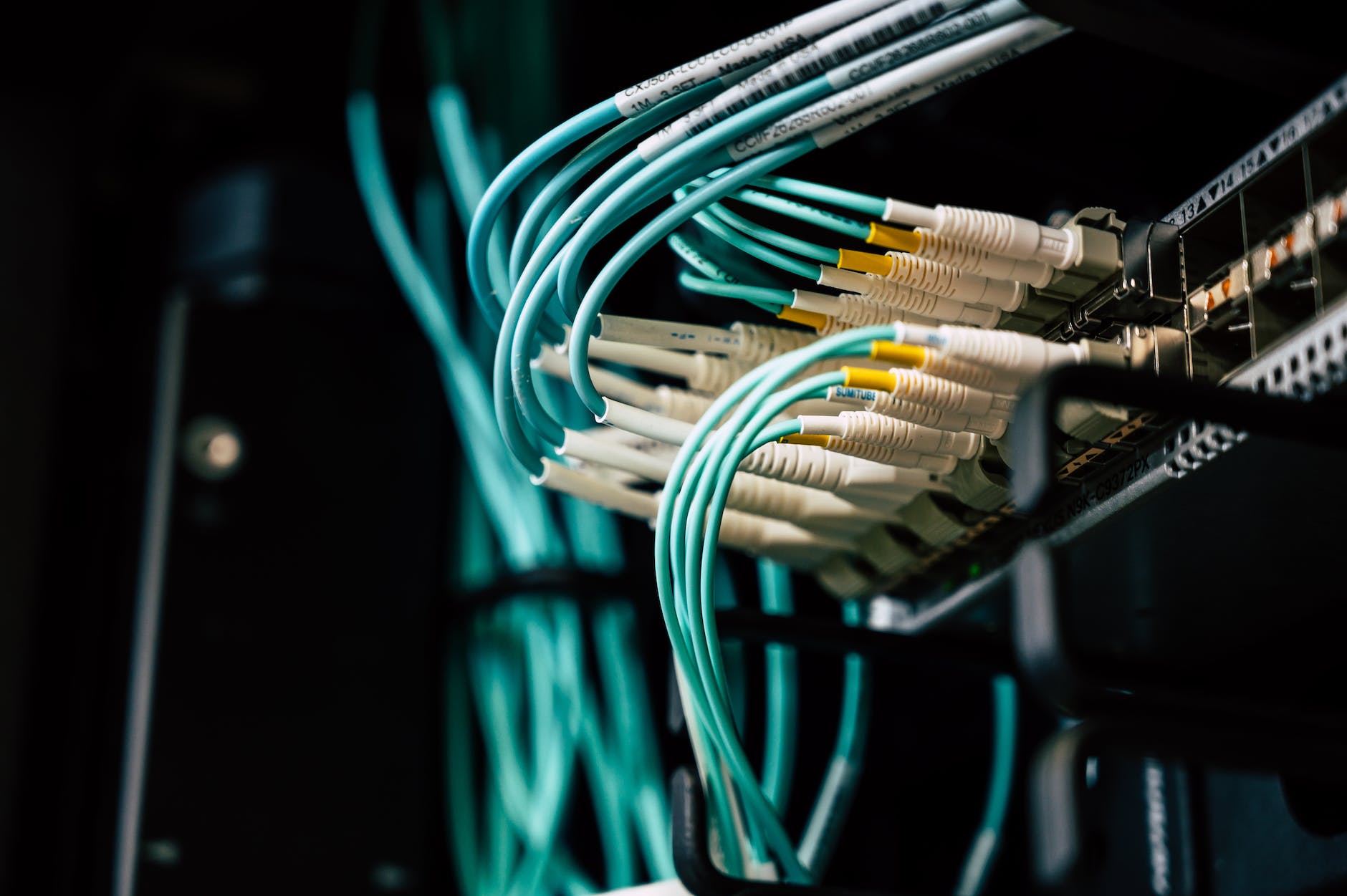
In an increasingly digital world, we must grapple with issues such as privacy, security, and efficient transaction systems. This need has paved the way for innovative technologies like blockchain, which, though most recognized as the backbone of cryptocurrencies such as Bitcoin, has implications far beyond digital currencies. As we dive into the crux of blockchain technology, we’ll discover a myriad of benefits that make it a potential game-changer in various sectors.
What is Blockchain Technology?
In essence, blockchain is a decentralized, distributed ledger that records transactions across multiple computers in such a way that any involved record cannot be altered retroactively, without the alteration of all subsequent blocks. This inherently ensures data security and robustness, granting it the potential to revolutionize various sectors.
Let’s unpack some of the most impactful benefits of blockchain technology:
1. Enhanced Security
Blockchain utilizes advanced cryptographic techniques to ensure the data recorded is secure and immutable. Once a transaction is approved, it’s encoded into a block of digital data and uniquely signed or identified. Each block is linked to the one before and after it, creating an irreversible chain. This makes blockchain exceptionally secure against fraud and unauthorized intervention.
Let’s delve a bit deeper into it.
In a blockchain network, every transaction is secured using cryptographic principles. Here’s a simple illustration of how it works:
- Transaction: When a transaction is initiated, it is grouped together in a cryptographically protected block with other transactions that have occurred in the last ten minutes.
- Block creation: This block is then sent out to the network of computer nodes, or participants in the blockchain, to be verified. Every node in the blockchain network has a copy of the entire blockchain, which means the full history of all transactions is accessible to all participants in the network.
- Block validation: Before a block can be added to the chain, a cryptographic puzzle must be solved, thus creating consensus among the nodes. This puzzle is solved by a process called “mining.” When a “miner” solves the puzzle, they announce it to the network.
- Block addition: If the network agrees that the puzzle has been solved, the block is added to the chain, and the transaction within it is considered confirmed.
This cryptographic process, combined with the fact that every participant in the blockchain network has a copy of the entire chain, makes it extremely difficult to alter information about transactions once they have been confirmed. Even if one node was compromised, it wouldn’t affect the entire network.
This level of security is why industries such as finance, healthcare, and supply chain management are interested in using blockchain technology. It can provide a much higher level of data security than traditional systems, which rely on a central authority and are thus more susceptible to single points of failure.
Furthermore, the immutability of blockchain transactions is another key security feature. This means that once a transaction is validated and added to the blockchain, it cannot be changed or deleted. This creates an enduring and transparent record of transactions, adding to the trust and security that blockchain technology offers.
So, the enhanced security offered by blockchain technology comes from both its decentralized nature and the advanced cryptographic techniques it uses, making it highly resistant to fraud and unauthorized interventions.
2. Transparency and Traceability
Each transaction on a blockchain network is fully transparent and can be traced back to its origin. This offers an unprecedented level of accountability, reducing the chances of corruption and illicit activities. For industries with complicated supply chains like pharmaceuticals or agriculture, the traceability of blockchain could help track the entire journey of a product, ensuring authenticity and quality.
Transparency and traceability are indeed key features of blockchain technology, providing a multitude of benefits across different industries.
Transparency: One of blockchain’s fundamental characteristics is its public ledger, which means every transaction is recorded and can be viewed by anyone within the network. This makes the system incredibly transparent. For cryptocurrencies, this means anyone can see the history of a coin, which can contribute to establishing trust and accountability.
This transparency is not just applicable to cryptocurrencies. It can be adopted by many other sectors. For instance, in a business context, blockchain can significantly improve the auditing process by providing a complete, transparent record of all transactions related to a particular business process or asset. This can reduce the time and cost associated with audits while increasing their accuracy.
Traceability: Traceability in a blockchain is a significant benefit, especially for supply chain management. Each time an exchange of goods is recorded on a blockchain, an auditable trail is present. This historical transaction data can help to verify the authenticity of assets and prevent fraud.
In supply chains, this means you can trace an item back to its origin and follow its journey to the end consumer. This can be crucial for sectors like food, where knowing the origin of a product (like whether a product is genuinely organic) can add value. Similarly, in the pharmaceutical industry, being able to verify a drug’s journey from production to dispensing can help prevent counterfeit medicines’ entry into the market.
Overall, the combination of transparency and traceability that blockchain technology offers can enhance security, efficiency, and accountability across a wide range of sectors. This is especially significant in today’s world, where data integrity and transparency are increasingly demanded by both businesses and consumers.
3. Cost and Time Efficiency
Traditional banking systems and online money transfers usually involve fees and exchange costs. Blockchain transactions can minimize these costs since they do not require a ‘middleman’ like a bank or clearinghouse. By eliminating the need for third parties and providing a faster, 24/7 transaction system, blockchain technology could drastically increase efficiency and reduce costs.
Let’s delve deeper into these benefits.
Cost Efficiency: Traditional transaction systems often involve various intermediaries, including banks and payment processors, each adding their own fees and charges. These costs can quickly add up, especially for international transactions. In contrast, blockchain transactions can be conducted directly between parties, without the need for intermediaries. This peer-to-peer approach can significantly reduce costs associated with transfers, particularly for international transactions where currency exchange fees are usually high.
Moreover, the reduction or elimination of intermediaries also results in fewer bureaucratic hurdles and paperwork, thereby further reducing the cost and complexity of transactions. This can be a particular advantage for small businesses and startups, which may not have the resources to navigate complex financial systems.
Time Efficiency: Traditional banking systems are notorious for their speed, or lack thereof. Transferring money, particularly across borders, can take several days to complete. This is due to the numerous checks and verifications needed by intermediaries, as well as their operational hours.
On the other hand, transactions on a blockchain can be processed 24/7, irrespective of weekends or holidays, and are often completed in a matter of minutes. This can make a significant difference, especially in urgent situations or where instant transactions are required.
Moreover, the real-time, immutable recording of transactions on a blockchain also improves the speed and efficiency of record-keeping and auditing processes. This is because the need for manual checks and reconciliations is greatly reduced, as each transaction is automatically recorded and can’t be changed.
In summary, by eliminating intermediaries and automating the recording and verification of transactions, blockchain technology can deliver significant cost and time efficiencies. This has the potential to revolutionize not only the financial sector, but any industry or process that relies on secure, reliable, and quick transactions.
4. Decentralization
One of the most significant benefits of blockchain is decentralization, leading to a democratic system. No single authority can control the blockchain network, making it resistant to censorship and granting control and ownership of the data back to the user.
Let’s look a little deeper into these aspects.
Empowering Users: In a centralized system, all the control is concentrated in a single authority or institution, like a bank or a tech company. This creates a power imbalance, as users must trust the authority to act in their best interest. In contrast, a decentralized blockchain network spreads control across its users. Everyone who participates has an equal say in the rules of the network. This democratically empowers users and removes the inherent risk of a single point of control or failure.
Promoting Transparency: In a decentralized system, all transactions are publicly recorded on the blockchain ledger, enhancing transparency. Each participant in the network has a copy of the entire blockchain, so any attempt to fraudulently alter the blockchain would require the majority of participants to collude, which is highly unlikely and computationally difficult due to the system’s design.
Enhancing Security: Decentralization also enhances security. In a centralized system, if the central authority is compromised, the whole system is at risk. In a decentralized blockchain, even if a node is compromised, the rest of the network remains unaffected. This resilience protects the network from attacks and ensures continuity of service.
Resistance to Censorship: Blockchain’s decentralized nature also makes it inherently resistant to censorship. No single party can control what is added to the blockchain, or prevent a transaction from taking place. This ensures that the system remains fair and open, regardless of any outside attempts to control or influence it.
Data Ownership: Decentralization gives control and ownership of the data back to the user. In a world where data privacy concerns are growing, blockchain could provide a solution. Users can control their personal data and choose when and with whom they share it.
In essence, decentralization is at the heart of what makes blockchain a groundbreaking technology. It reshapes the balance of power, offers increased security, and provides a more open, democratic system. Its potential applications are vast, ranging from finance to data management, supply chains, and beyond.
5. Interoperability and Collaboration
Blockchain networks offer a standardized way of transferring data and digital assets between different platforms and systems. This level of interoperability can promote greater collaboration and innovation, as businesses can easily work together and share information on a secure, unified platform.
Here’s a deeper look into these benefits:
Interoperability: In essence, interoperability refers to the ability of different systems and technology platforms to communicate and exchange data seamlessly. The interoperability of blockchain technology comes from its use of standardized protocols and formats, which allow data and digital assets to be transferred across different blockchain networks. This is particularly significant in today’s digital world, where many organizations and platforms operate in silos, making data exchange a complex task.
For instance, consider the world of cryptocurrencies. There are thousands of different cryptocurrencies, each operating on its own network. Interoperability allows for these disparate networks to communicate, enabling the exchange of different cryptocurrencies without the need for an exchange platform.
Collaboration: Blockchain’s interoperability has a direct impact on collaboration. By facilitating seamless data exchange, blockchain enables businesses and organizations to work together more effectively. For example, in a supply chain involving multiple organizations, blockchain can enable real-time, secure sharing of data related to product movements, inventory levels, and other critical information. This can increase efficiency, improve visibility, and foster trust among the participating organizations.
Furthermore, because blockchain networks are decentralized and secure, they allow multiple parties to collaborate without needing to fully trust each other or a central authority. This can be particularly valuable in sectors where sensitive data needs to be shared, such as healthcare or finance.
Innovation: Blockchain’s interoperability also fosters innovation. By breaking down barriers between different platforms and systems, it allows for new kinds of applications and services. For instance, in the field of decentralized finance (DeFi), blockchain interoperability is enabling the creation of complex financial products that interact with multiple cryptocurrencies and blockchain networks.
In conclusion, the interoperability and collaboration benefits offered by blockchain technology can lead to more efficient processes, enhanced trust, and innovative solutions. By breaking down data silos and enabling secure, standardized data exchange, blockchain is paving the way for a more connected and collaborative digital landscape.
Blockchain Beyond Cryptocurrency
The implications of blockchain technology extend well beyond the realm of cryptocurrencies. Here are a few examples of how blockchain is transforming various industries:
- Healthcare: The security, transparency, and immutability offered by blockchain make it well-suited to managing health records. It allows for secure sharing of patient data among authorized professionals, ensuring data integrity, privacy, and compliance with regulations. Additionally, blockchain can help with drug traceability, preventing counterfeit medicines from entering the supply chain.
- Supply Chain: The transparency and traceability of blockchain are crucial in managing supply chains. By recording transactions at every step of the journey, blockchain provides an immutable record of a product’s journey from manufacturer to consumer. This can help combat fraud, improve inventory management, and increase consumer confidence in the authenticity and ethical sourcing of products.
- Energy Sector: Blockchain can be used to create a decentralized, peer-to-peer energy trading system. This would allow producers of renewable energy, such as households with solar panels, to sell excess energy directly to their neighbors. Blockchain would securely record these transactions, providing a transparent and efficient system for decentralized energy trading.
- Identity Verification: Blockchain can provide a secure, decentralized framework for digital identities, reducing the risk of identity theft and fraud. It would give users control over their personal data, with the cryptographic security of blockchain ensuring that data can’t be changed without their consent.
- Public Sector and Voting: Blockchain could revolutionize voting systems, making them more secure, transparent, and resistant to fraud. Each vote could be recorded as a transaction on a blockchain, creating an immutable and publicly verifiable record of votes. This could increase trust in the electoral process and make it harder for votes to be manipulated or tampered with.
The examples you provided highlight the versatility and potential of blockchain technology, which goes far beyond its original application in cryptocurrencies. As research and understanding of this technology continue to grow, we can expect even more innovative and transformative uses for blockchain in various sectors. This makes blockchain not just a tool for digital transactions, but a potential catalyst for widespread digital transformation.
In conclusion, the benefits of blockchain technology have the potential to drastically reshape our world, offering enhanced security, transparency, and efficiency in a variety of sectors. As we continue to explore and unlock its potential, blockchain technology could prove to be a pivotal force in the digital revolution.








Laisser un commentaire